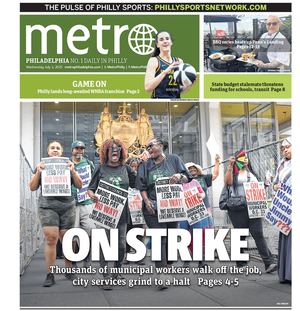Philadelphians are more rooted in their communities, but not everyone has the same level of access to all that the city has to offer.
Those were the main findings of survey results released earlier this month by the Knight Foundation and Urban Institute. Data was analyzed from 26 cities to develop a national baseline from 11,000 participants, including 582 in the Philadelphia metro area.
Nearly 60% of those who live in Philadelphia were born in the city or its surrounding Pennsylvania suburbs, far above the U.S. average of 23%, according to the study.
People who live in the city tend to stay longer, too. On average, residents remain in the area for 21 years, compared to 17 years nationally.
It’s unclear whether people are staying because they want to or because of barriers to mobility. The city’s high poverty rate—it has remained stagnant at 25%—could mean some residents cannot afford to leave.
When asked if they would stay if they could live anywhere, 53% of Philadelphia respondents say they would, a tick below the national average, 58%.
Evette Alexander, of the Knight Foundation, said there are positives and negatives to a mobile population. More transience typically means higher educated people are traveling in search of their next opportunity on the job market, a good sign for the local economy.
However, populations with more history in a city tend to be more emotionally attached and have deeper relationships, she said. Those long-term residents also are more likely to be civically engaged and work to improve their neighborhoods.
“Regardless of whether they are choosing to stay in a very positive way or they feel like they don’t have other options, they’re sticking around and they’re in Philadelphia for the long haul,” said Alexander, who oversaw the survey.
“It’s still imperative to think about how we improve the quality of life for these communities that are here and rooted here and not likely to leave,” she added.
Ellen Hwang, the Knight Foundation’s Philadelphia director, said the rootedness underscores the need for policymakers to include the public in decision-making.
“It just makes for more reason to really value the voice of residents,” Hwang said.
Perhaps unsurprisingly, the survey also found that white residents have an easier time taking advantage of the region’s assets than people of color.
About 80% of white Philadelphians reported have “easy access” to safe places to live, work and play, compared to 57% of non-white residents. The results were not broken down into individual racial groups.
Gun violence could play a role. A map recently produced by the District Attorney’s Office shows that the number of shootings in a neighborhood strongly correlates to poverty rate. Many of those same neighborhoods are majority black and brown.
Non-white residents of Philadelphia and Bucks, Chester, Delaware and Montgomery counties ranked recreation centers and parks as “very important” more often than white residents, 77% to 58%. Nearly 80% said the same about family amenities, compared to about 60% of white residents.
When it comes to access, the answers flipped.
About 80% of non-white participants said recreational opportunities were easy to access, as opposed to 92% of white respondents. For family amenities, that split was 82% to 91%.
“I think part of the interesting thing of this study is that some of it is not necessarily new information but I think… (it) is always powerful to have that data,” Hwang said.
She hopes lawmakers use the results to gauge the priorities of residents and focus on equity.
“These are the kind of things that are potentially going to allow them to not only stay here but also thrive here,” she added.


































